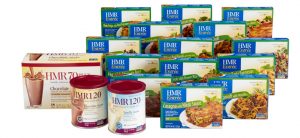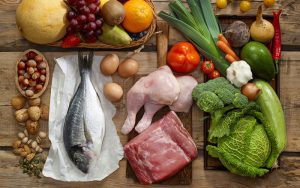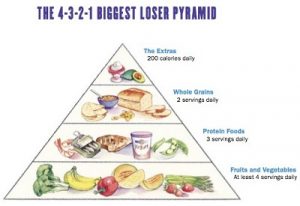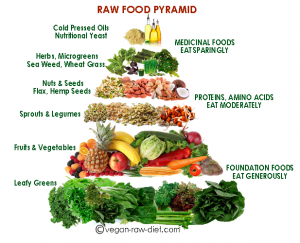There are many different types of dieting plans out there that claim to be the best way for people to lose weight and manage their eating habits. It may not be that the diet doesn’t work or won’t have positive effects, but that the results don’t last; as soon as we reach our goal weight or measurement aspirations, we discontinue the eating plan and the weight comes right back.
The important thing is to be educated about these new “fad-diets” and understand what is realistic for your own body, goals, and situation.
HMR Diet (Health Management Resources)1,2
About the Diet: This p rivately owned national healthcare company was developed by a behavioral psychologist and is the leading provider of medically based weight management programs in clinics, hospitals and major medical centers, providing clinical or in-home dieting options. It is based on low calorie consumption and uses meal replacement entrees, shakes, bars and cereals, while emphasizing consumption of fruits, vegetables, physical activity and positive lifestyle changes.
rivately owned national healthcare company was developed by a behavioral psychologist and is the leading provider of medically based weight management programs in clinics, hospitals and major medical centers, providing clinical or in-home dieting options. It is based on low calorie consumption and uses meal replacement entrees, shakes, bars and cereals, while emphasizing consumption of fruits, vegetables, physical activity and positive lifestyle changes.
The “good”: Since the meals and supplements are automatically delivered to your home, it is very convenient. Personal support helps with accountability and success, while teaching participants to make healthy lifestyle changes on their own and allowing them to realistically maintain long-term weight loss. Hunger is usually not a concern since participants eat 6 meals/snacks high in fiber to promote fullness while eating less.
The concerns: Can be overwhelming, expensive, and monotonous. Does not meet all the US Dietary Guidelines and is high in sodium.
The bottom line: If you can afford it and don’t mind eating the same foods every day, this is a mostly healthy diet emphasizing weight loss and health management.
Paleo Diet (aka Caveman or Stone Age Diet)3,4
 About the Diet: Principles are based on food groups that were supposedly eaten by pre-agricultural, hunter-gatherers, or “cavemen,” and restricts grains, dairy, legumes, sugar, and salt based on the belief that, “our bodies are predisposed to eat this way.”
About the Diet: Principles are based on food groups that were supposedly eaten by pre-agricultural, hunter-gatherers, or “cavemen,” and restricts grains, dairy, legumes, sugar, and salt based on the belief that, “our bodies are predisposed to eat this way.”
The “good”: Encourages a fairly balanced diet of clean, unprocessed foods and healthy oils while discouraging saturated and trans fats and processed sugar.
The concerns: Does not meet all the 2010 Dietary Guidelines for Americans and discourages consumption of dairy and grains. Because of this, supplementation is necessary to avoid deficiencies. Besides that, this diet is simply unrealistic and difficult to follow, especially long-term.
The bottom line: While this diet promotes the consumption of unprocessed foods, lean means and high amounts of fruits and vegetables, it is definitely lacking in certain nutrients and can also be socially isolating.
Biggest Loser Diet5,6,7
 About the Diet: Based on Biggest Loser’s 4-3-2-1 Pyramid: 4 servings of fruits/vegetables, 3 servings of lean protein, 2 servings of whole grains, & 200 “extra” calories, this diet promotes weight loss through the consumption of small, frequent, balanced meals and greatly increased physical activity.
About the Diet: Based on Biggest Loser’s 4-3-2-1 Pyramid: 4 servings of fruits/vegetables, 3 servings of lean protein, 2 servings of whole grains, & 200 “extra” calories, this diet promotes weight loss through the consumption of small, frequent, balanced meals and greatly increased physical activity.
The “good”: There are no “bad” foods as this diet includes all food groups and meets the 2010 Dietary Guidelines for Americans. Low calorie food choices with increased fiber help ensure satiety, and label-reading is encouraged to help participants learn how to make healthy, life-long choices. Meal plans, recipes, workouts and online support is provided for a fee, not to mention it is recommended by the American Heart Association.
The concerns: Because of the high amount of exercise required, it is unrealistic to sustain long-term, and supplementation may be required depending on the amount of calories provided by certain meal plans.
The bottom line: This diet promotes healthy weight loss while maintaining lean muscle and has been shown to reduce the risk of certain nutrition-related diseases, however is very demanding and may be difficult to maintain for an extended period of time.
Jenny Craig Diet8,9

The “good”: Participants avoid excessive hunger and are able to boost metabolism by eating 6 small meals/day. Participants are able to meet with consultants and/or refresh their menu at any time. Consultants are required to complete continuing education units to keep training up to date, and are available for personal, one-on-one support. Participants receive help transitioning off diet so that they are able to maintain weight loss on their own.
The concerns: This diet can be expensive, limits eating out, and can be socially isolating.
The bottom line: Promotes healthy weight loss under the supervision of educated consultants. Participants do not have to track or count – simply eat according to their personalized meal plan. The use of a “volumetrics” approach allows participants to avoid hunger while eating less calories.
Raw Food Diet10,11
 About the Diet: Based on the idea that heat destroys essential nutrients and enzymes necessary for a healthy lifestyle, therefore food should not be heated over 115 degrees Fahrenheit.
About the Diet: Based on the idea that heat destroys essential nutrients and enzymes necessary for a healthy lifestyle, therefore food should not be heated over 115 degrees Fahrenheit.
The “good”: Diet consists of a wide variety of healthy foods (fruit, vegetables, seeds, nuts, grains, legumes, and healthy oils), in their whole, natural state and can be very effective for weight loss since most of the foods eaten are low in calories. If done correctly, it can meet the US Dietary Guidelines for Americans, and can lower the risk of developing cardiovascular diseases as well as improve digestion and skin appearance.
The concerns: Restricts some essential nutrients so requires supplementation. According to the Academy of Nutrition and Dietetics it is inappropriate for infants and children, and the US Food and Drug Administration claims it is dangerous (since certain foods (buckwheat, kidney beans, alfalfa sprouts, raw eggs, meat, milk, among many others) are potentially toxic if consumed raw, and does not have health benefits.
The bottom line: While this diet may seem like a good idea, the proof behind the beliefs about this diet is seriously lacking in scientific evidence. It is expensive, requires much planning and prepping, is nearly impossible to follow long-term, and can be dangerous.
References
1) http://www.hmrprogram.com/index.cfm/Programs/HomePrograms
2) http://health.usnews.com/best-diet/hmr-diet
4) http://www.eatright.org/Public/content.aspx?id=6442471551&terms=paleo
5) https://www.biggestloserclub.com
6) http://www.webmd.com/diet/biggest-loser-diet?page=2
7) http://health.usnews.com/best-diet/biggest-loser-diet
8) http://www.jennycraig.com/site/the-science
9) http://health.usnews.com/best-diet/jenny-craig-diet